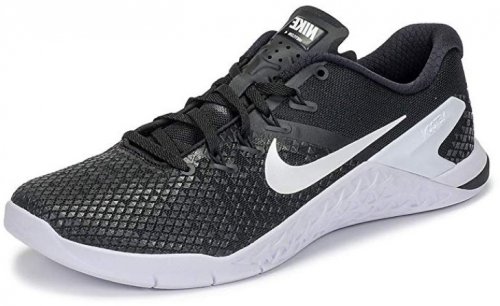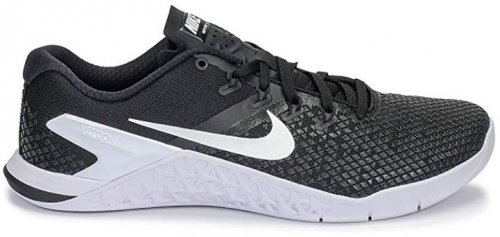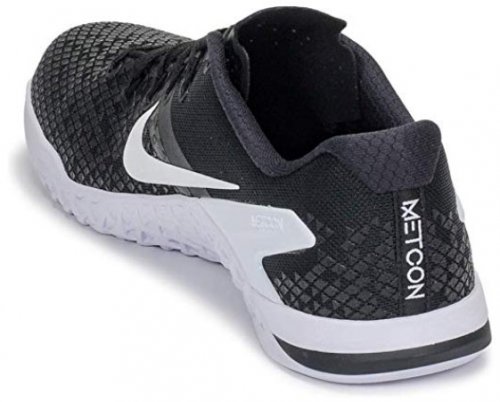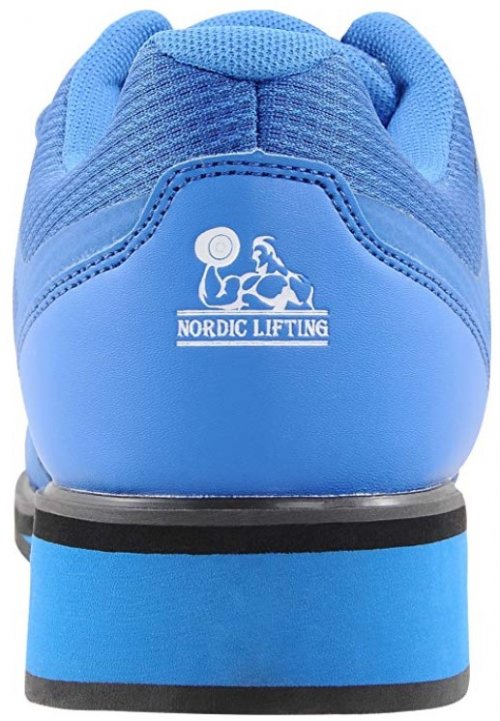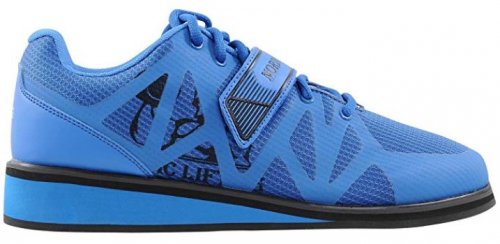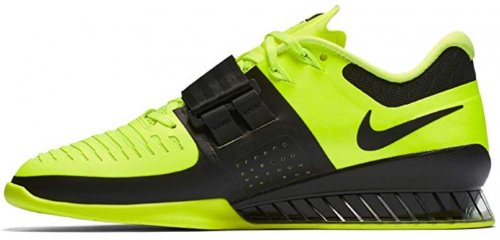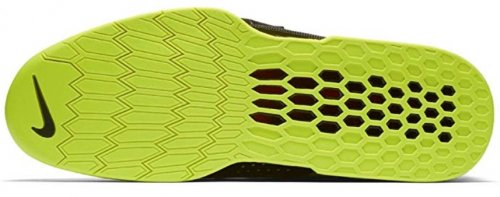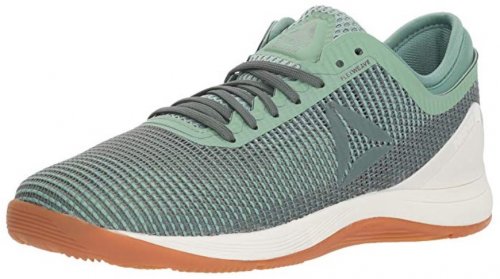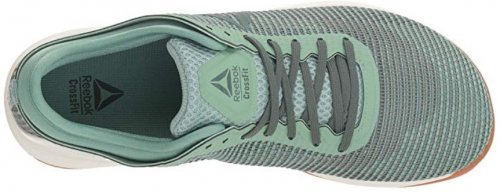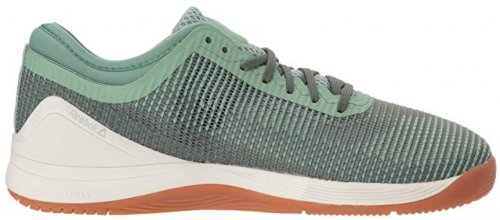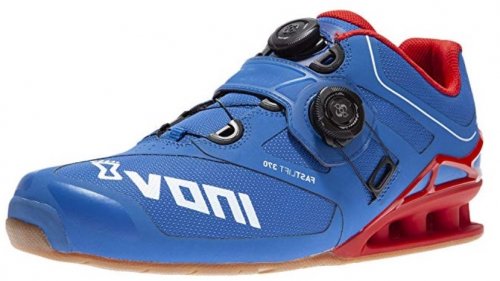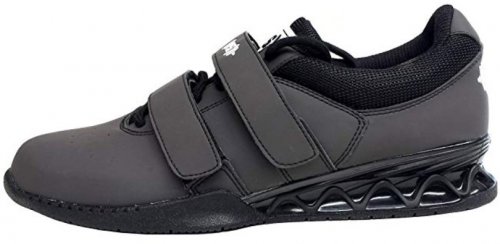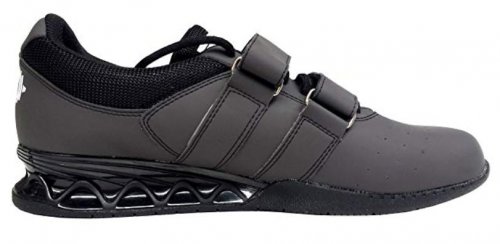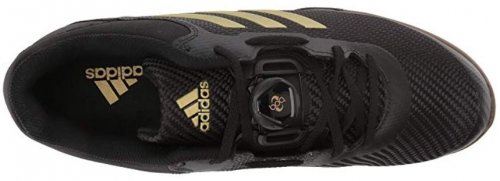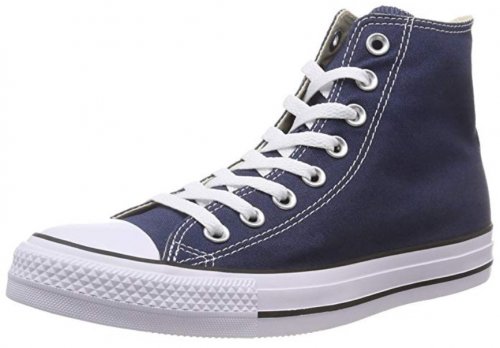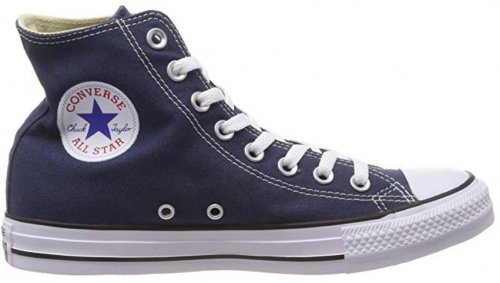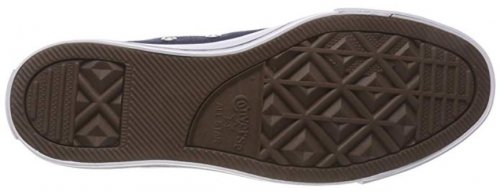Best Shoes for Weightlifting and Powerlifting Reviewed & Rated
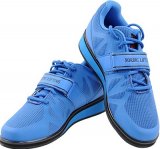
The human form handling heavy loads through weightlifting and workout is no different in this regard; our lower body serves as our foundation, our base on which we stand, and press upward against that otherwise crushing weight.
This is why it’s vital and extremely important (and never to be underestimated) that the weightlifting shoes you buy are up for the task of delivering a safe set, free of the threat of muscular or skeletal injury. Take a look at the best shoes for weightlifting currently on the market!
Standout Picks
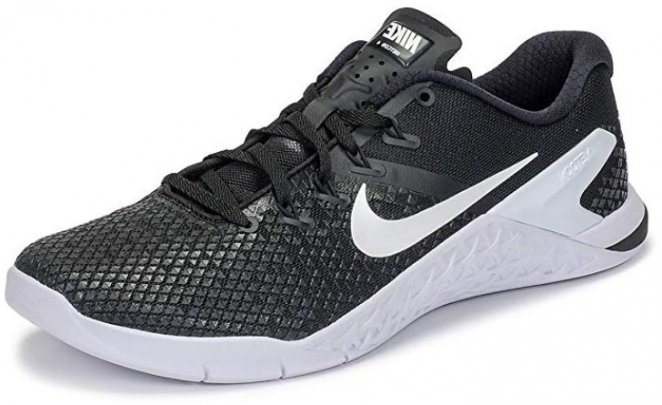
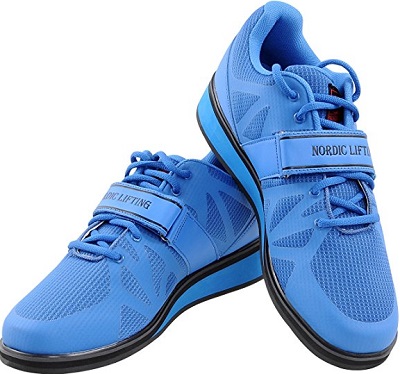


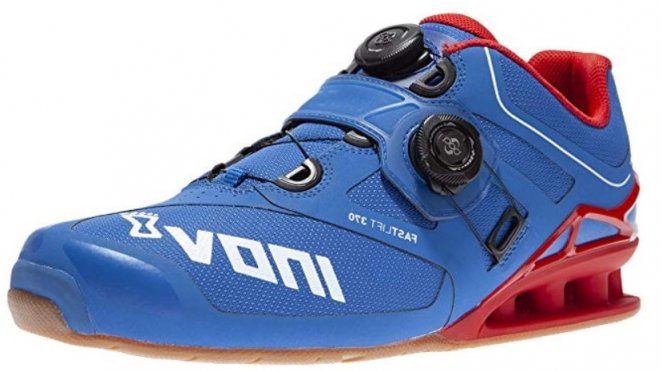
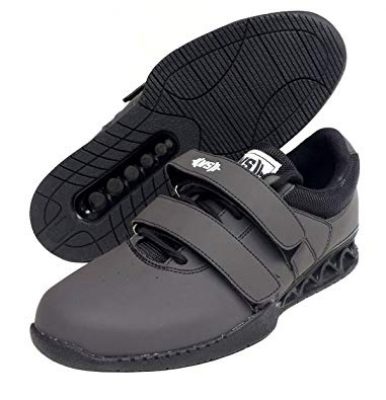
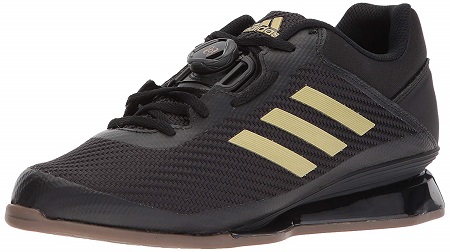
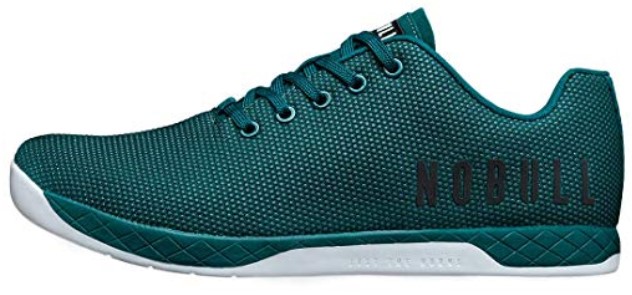
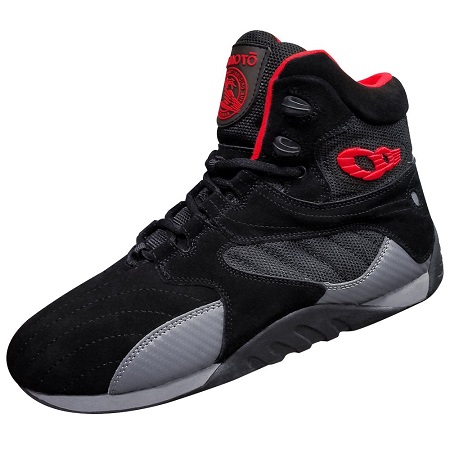

Criteria Used for Evaluation
Stability
To maximize your performance and prevent injury, look for stable powerlifting shoes that are low to the ground.
Weightlifting involves very complex exercises which, at advanced levels, usually involve carrying, pulling, pushing, and lifting excessive amounts of weight. Additionally, some weightlifting practices require complex motions while remaining in control of a loaded barbell. As you can probably guess, this is not a scenario where you want your weightlifting shoes to have poor stability, but rather the complete opposite.
Though multiple factors have an impact on the stability of a shoe, it ultimately comes down to the outsole height. The higher you are off the ground, the less stability you’ll have.
When dealing with big weights, it’s important to remain as close to the ground as possible. However, a totally flat outsole might not be convenient for some exercises. The higher you are off the ground, the more likely you are to lose lateral balance.
Regardless of the exercise you’re performing, if it involves no support, you want as much stability as you can get. Unstable powerlifting shoes are extremely hazardous in the lifting room and become more dangerous as you hit heavier. Losing control of the barbell not only creates the possibility of being hit directly by the loaded bar but it also exposes you to injuries. If your knees or ankles start tilting inwards or outwards because of an unstable weightlifting shoe, you’re guaranteed to have a bad time when lifting heavy.
But it doesn’t stop there. Stability is not just a matter of safety but also a matter of optimal performance. Poor balance can actually reduce your capacity to lift more weight. The lack of stability can affect your form, range of motion, and endurance.
In the opposite case, a solid and steady lifting shoe allows you to perform at your best. This is due to your positioning and impulse when performing an exercise. While deadlifting, for example, shoes should act as a firm platform to push your feet against the ground, helping you lift the barbell.
Stability is of utter importance during dynamic exercises as well, such as the clean and jerk, the barbell snatch, and barbell lunges.
The main elements that contribute to the stability of a weightlifting shoe are the sole grip, the ankle support, and the shoe height.
Outsole
Depending on the type of lifting you're doing, search for the best heel type and optimal grip that fits your exercise routine.
When it comes to performance footwear, weightlifting shoes are very similar to running ones. While there’s the traditional multi-purpose running sneaker, more specific activities like trail running require additional features. This is the cause of weightlifting. While it might all look like the same at first hand, there’s a wide variety of differences amongst lifting performances.
This doesn’t mean that it’s forbidden to train with other shoes. You might, eventually, get away with weight training in sneakers in some cases, such as Converse. Although the variations aren’t too different physically, there are certain key aspects that do matter. Keep in mind this is by no means necessary to train, but it’s something to consider; especially if you’re after the most optimal performance.
For instance, steady and heavy compound movements such as the deadlift are best performed with flat soles. The midsole shouldn’t be too thick or too high, and the outsole should provide an adequate grip to the training surface.
The better grasp you have on the surface, the better you’ll perform. Old school lifters often preferred going barefoot on deadlifts. This is because they believed every inch between you and the ground affected your form. This distance can also cut off some pounds you could be potentially lifting.
Squats, on the other hand, are best performed with a raised heel. Now, there’s a lot of controversies whether this is good or not. It all comes down to each person’s preference (and anatomy in some cases); what’s comfortable for you might be utterly annoying for others. Some heavy hitters will tell you their $200 raised-heel squatting footwear is the key to breaking personal records. On the other hand, you’ll also see gym veterans (and even Olympic lifters) rocking a good ole’ pair of Chuck Taylors.
So, what’s behind each shoe?
Raised heel shoes are what’s commonly known as a weightlifting design. The International Weightlifting Federation (IWF) defines it as “a shoe to protect lifters' feet from falling weights while also providing a stable, firm surface.” This is why you might have seen some footwear with a type of protective cap around the toe box.
As for the raised heel, it helps some users to drop the hip as much as possible while maintaining an upright back. Because of this, there’s a considerable decrease in stress to the lumbar spine, also activating more the quadriceps. They’re a really good way to hit those ass-to-grass squats. The heel is, usually, 3cm tall and should be no higher than that. Additionally, the raised heel helps prevent bad form as well as the valgus knee collapse.
Lastly, Chuck Taylors are the old-school favorites. If you want an unbendable rubber outsole that acts as a solid platform, Converse is where you go. They deliver a good squatting performance for beginners, and you don’t have to break the bank. Though, they suck for running; no debate on that. These won’t support your depth or your spine, but you can place two small plates below your heels to simulate a raised heel.
Heel
Decide whether you require footwear with a raised heel or a flat sole.
Just like the outsole cases we just mentioned, there’s a moment when you could use heel height and moments when you must not. Regardless of the exercise you’re performing and the type of shoe you’re wearing, you can’t have 7cm of a heel. That’s just asking for an accident.
Heel height is a key point in the realm of stability and form; get those two things wrong and your performance will suck, not to mention that you’ll be inviting an injury.
A heel raise, if any, should be no higher than 3cm. This is, of course, depending on the exercise you’ll perform. During deadlifts and similar practices, a raised heel is the last thing you want. Once again, we’re not telling you to get the most expensive pair of Olympic shoes available; just don’t wear the wrong ones.
A raised heel during a deadlift, such as the one in running shoes, decreases your vertical balance. By having your heels higher than your toes, you’re likely to lean forward when pulling the weight off the ground. If by any chance you start inclining forward when the bar is on the way up, we can guarantee you a painful result.
But heel height is not always a negative thing. Like we previously explained, it can be beneficial for your posture and performance in exercises such as the squat. Additionally, in Olympic lifting shoes, heel height often comes from raised heels.
Raised heels are not just a bulk of rubber that goes on the back of your outsole. In fact, what people often don’t know is that raised heels are, usually, made of wood or plastic. They are also equipped with a rubber outsole to prevent slipping.
Heel height can be a very useful tool for users with ankle mobility and flexibility issues. This heel platform relieves some of the pressure involving the muscles in the lower body (peroneal, soleus, and lateral gastrocnemius). These muscles often get the stiffest during heavy squatting. Lastly, the raised heel can help preserve a neutral arch on the foot.
Durability
To increase the durability of your footwear, choose the right design for the right kind of lifting.
Weightlifting shoes need to be able to endure heavy exercising. This involves both static and dynamic weight training. As soon as the elements of a design start deteriorating, performance becomes heavily affected. As you can imagine, durability and performance go hand-in-hand.
The durability of footwear is mostly related to the material it's built from, as well as the manufacturing quality. Weightlifting shoes are pretty much the same. Believe or not, deterioration in them can determine how much you can lift. It also determines your performance and potential risk of injury.
Each element degrades individually, but it’s important to understand the shoe degrades as a whole. This means every element should be in a similar state as the rest of them. If one element degrades much faster than the rest of the design, it will lose its quality and the potential usage the rest of the elements may still have. For instance, if the upper rips apart while the outsole rubber is in good shape, the design is unusable now and a healthy outsole goes to the trash.
Generally, the piece that degrades the fastest in a weightlifting shoe is the sole. This is no surprise, as it’s the part that handles the most tension. The heavier you lift, the more your sole will suffer. This doesn’t mean you should go light to avoid killing your powerlifting shoes; they’re made for lifting, after all. If, however, you’re using the wrong shoe for a heavy deadlift, you can considerably reduce its lifetime by squashing the sole.
One of the most important concepts of durability is proper usage and care. The example we just mentioned is a common result of what happens when people do weight training while wearing running sneakers. These sneakers are designed to provide comfort and protection to the foot during aerobic activities. Put them under hundreds of pounds, however, and they’re not so good, anymore.
It’s also important to know when your footwear has reached its time. Weightlifting shoes are, definitely, not the kind of footwear you want to push over its durability. We’re no longer talking about comfort or efficiency but rather safety. Worn-out footwear can put you in many of the unfortunate situations we’ve mentioned here, such as losing balance under a loaded barbell and potentially injuring yourself.
Flexibility
If you are performing exercises with a lot of mobility, you may require more flexible footwear.
You must be wondering, “Didn’t you just tell us we need rigid, solid platforms for lifting?” We did. And we reaffirm that claim when it comes to certain exercises. However, weightlifting is much more extensive than you might think. At a simple glance, it all looks like the same: barbells, dumbbells, lifting, pulling and pushing. There are, however, more differences than you can probably notice.
For instance, a lunge is considerably easier to perform in a flexible shoe than a stiff one. And yes, a lunge is a weightlifting exercise, just as much as any other. Like we mentioned in the outsole specialty section, this type of footwear varies according to the practice. Yet again, this doesn’t mean you need one pair of each kind of shoe.
Ask yourself: is my training dynamic, or is it steady and heavy? In other words, what kind of mobility do you expect during your training?
If you’re going to be moving around in dynamic motions with a barbell on your shoulders, you’ll want a flexible design. Total stiffness will do you no good during mixed training that requires a lot of mobility.
That being said, there are heavy training shoes that are flexible. You don’t have to limit yourself to the benefits of just one type of footwear.
There are special designs for specific activities, but those are meant for people who dedicate precisely to those specific practices. Keep in mind we always target our advice towards the most optimal performance, as well as your personal health. This is why we may recommend such a large variety of footwear styles.
We’re not saying there’s no other possible approach to deadlifting than deadlifting shoes. If you want a design that is flexible when moving around but stable when lifting, that’s just fine. As long as they don’t bend around when you’re lifting heavy, they do the trick. Of course, specific footwear for each activity would deliver better results, but at the cost of convenience and expenses. On the other hand, knowing your safety is in a good place is always worth the extra penny.
Our Favorites
1. Nike Metcon 4 XD
The Nike Metcon 4 XD is a great example of a design created both for cross-training and for lifting. It has a 3D-printed upper, meaning that it is in time with all the latest technologies, and it is also abrasion-resistant. Even more durability is added in the form of a rubber web which wraps around the midfoot area. The Metcon 4D is all about a stable heel, great traction and an insane amount of durability.
This design has an upper with Flywire cables integrated into it. Along with a lace-up closure, these ensure a fit that contours to the shape of your foot and moves along with you. The heel is secure while the forefoot is flexible, should you desire to do some lunges. The outsole is made from sticky rubber so that you don’t slip or skid when it is most important to you.
The Metcon 4 XD may not be the conventional lifting choice. However, if you are looking for something steady and sturdy - with an incredibly long lifespan - that you can easily use both for your CrossFit and your lifting exercises, there is no better option than this Nike design.
2. Nordic Lifting Megin
Nordic does not disappoint with this design. These are built well and made for the serious athlete looking to improve their squat performance. Additionally, the 1.4" raised heel, provides an environment conducive to heavier weightlifting while, simultaneously, giving you the chance for posture improvement. Furthermore, these are built to last with top-quality stitching; created to not fall apart under pressure.
With a 1.4" raised heel, this pair is ideal for squats utilizing weight which leans on the heavier side. Furthermore, posture improvement is the driving force behind these particular sneakers. Your body will notice a difference. Anti-slip matters when you are handling heavy weight. Nothing could be more damaging than slipping. As such, an anti-slip outsole can be the difference between a safe environment and an unsafe one. This is why we recommend this pair of shoes designed for heavy weightlifting.
These are priced low and come with an added 1-year manufacturer's warranty. Although minimal in color choices, the quality of this pair makes them a purchase worth your time.
3. Nike Romaleos 3
Named after the winged Greek Goddess of victory, Nike is one of the most recognizable brands in the world. Featuring a honeycomb TPU plate, the Romaleos 3 is designed to balance stability with a lightweight form. A synthetic upper provides breathability, while the rubber outsole promotes traction. Sizes range from a US 5-15, including half sizes and additional width options.
Stability and traction go hand in hand with weightlifting. Traction will keep your feet from slipping on the floor, and stability will keep your feet from slipping inside the shoe. In the Romaleos 3, this is handled using a TPU plate and a strong rubber outsole. The TPU plate is made with a honeycomb pattern, while the traction pattern on the outsole ensures a good footing. These are designed to keep you stable and in proper form when lifting.
It's important that you have well-fitting footwear. This is why we like seeing powerlifting shoes that come in a wide range of sizes, including those on the smaller and larger ends of the spectrum that can be difficult to find. The Nike Romaleos 3 runs true to size, eliminating some of the guesswork when it comes to choosing the right size.
4. Reebok CrossFit Nano 8.0
Updated from the Nano 6.0, Reebok made a few upgrades to the existing technology, such as the RopePro tech to help make the Nano 8.0 more functional and lightweight. Designed with Kevlar-infused materials to make the uppers fray-resistant and bring further lifespan to the powerlifting shoe, and a better outsole for traction control, it’s the next evolution in a CrossFit style shoe to take you to your limits and push beyond.
Uppers in the Nano 8.0 have been updated to make them even more durable. Designed with a Kevlar infused mesh, this option is not only lightweight, but can withstand abrasions, frays, and sweat so you can get the most from this pair. Combined with the RopePro technology, Kevlar gives it a sandpaper-like feel for added grip when on the ropes.
Foam cushioning lines the midsole of the Nano 8.0, and with its anatomical fit for proper foot splay and heel stability, you’ll still have the support needed for proper technique and Olympic moves. The outsole now has Piston technology which gives it extra grip for running across uneven ground.
5. Inov-8 Fastlift 370 BOA
For years, the Inov-8 brand has been one of the leading names in all types of sports, from running to hiking to gym exercises. Their lifting line is one of the best currently on the market, with the Fastlift 370 coming out at the top. This design offers support and stability together with flexibility in the forefoot area so that you feel well-balanced and comfortable as you lift more weight than you have ever before.
The Fastlift 370 comes with a special BOA closure that ensures your foot is properly secured inside the design. It is easy to adjust with just a couple of touches. The heel is what the brand calls a POWERTRUSS Heel, formed out of hollow columns that are light in weight and provide a good foundation. Along the back, there is an External Heel Cage that keeps your heel supported and in a stable grip.
The outsole of the Fastlift 370 BOA comes with a Meta-Flex construction which gives you the ability to move naturally and doesn’t restrict your range of motion. The upper is made from overlays that protect the design and give it even more durability, and you simply know that the Fastlift 370 will give you everything you need out of a design of this type.
6. VS Athletics II
One of the up and coming sneakers for weightlifting is the VS Athletics II. It features a dual hook and loop closure atop a lace-up closure for an adjustable snug fit, and a rigid, stable sole for power transfer. The minimal differential between the heel and toe make it great for deadlifts or powerlifting in general. Uppers feature a leather and fabric construction to help maintain durability and wearability when working up a sweat.
With its dual Velcro hook and loop closure on top of lace-ups, you’ll find the perfect level of snug needed to keep you firmly in place in the VS Athletics II. This helps to give just a bit more stability, making sure you won’t slip around during movements. A padded collar prevents blistering or rubbing, so you can walk or run if you choose as well.
A minimal heel drop makes this ideal for deadlifting or squatting, keeping a 3.5cm that can make both moves possible without compromising form. A solid, more rigid sole gives maximal power transfer so that you won’t waste any energy that is usually lost in softer soles. And with the leather and fabric uppers, you’ll stay snug during movements, but will be able to keep these powerlifting shoes for months of training to hit the next goal.
7. Adidas Leistung 16 II
Designed as a cross-training shoe, the Leistung 16 II from Adidas puts security and stability at the forefront. It sports a unique closure system that can self-adjust on the fly, along with a TPU midsole and chassis designed with weightlifting in mind. The rubber outsole is flat to increase overall surface area while sporting strong traction as well. The Leistung 16 II is available in three colorways, for maximum sporty style.
A secure fit is of the utmost importance with this type of footwear. The wrong kind of fit will cause discomfort and impact your performance. The Leistung 16 II features a chassis designed specifically for weightlifting, as well as a unique self-adjusting closure system that allows for the most secure fit possible.
Let's be real for a moment; there's nothing worse than sweaty feet. Any kind of shoe should have some measures in place to ensure proper breathability and temperature management, as this will keep your feet cool and reduce the chances of sweat and odor. The Leistung 16 II achieves this with its lightweight breathable mesh that keeps your feet dry no matter what type of exercise you're performing.
8. No Bull Trainer
The No Bull brand may not be as familiar to you as some other hard-hitting names on this list, however, it is definitely well-known in the lifting and CrossFit communities. This particular Trainer is designed for any type of exercise you throw at it - running, climbing, lifting, you name it! If lifting is only one part of your workout regime, this is a well-rounded choice you can wear throughout.
The upper of the No Bull Trainer is made from SuperFabric, which is a material that has good ventilation, is lightweight but at the same time abrasion-resistant. Its color also doesn’t fade over time. There are guard plates over the mesh layer, protecting you and your footwear from ‘zombies, rope climbs and excuses’, as the brand itself declares.
The midsole is made of foam which doesn’t compress under heavy weight, and the outsole is grippy and durable. However, there is a downside to this versatile option - it lacks stability. So if you’re planning on lifting heavy weights and not doing much else for the day, perhaps leave these at home in favor of a more stable model.
9. Otomix Carbonite Ultimate
While Otomix may not be as well-known as Nike and Adidas, they have garnered a lot of loyal fans. The brainchild of martial arts master Mitchell Bobrow, Otomix focuses heavily on comfort and stability, and the Carbonite Ultimate is a high-top design that stands out. Sizes range from a US 7-14, including half sizes, and this design is available in three colorways.
The Otomix Carbonite places a heavy focus on comfort in a number of ways. The high-top design provides additional ankle support, while the collar has padding to keep your ankles in good form.
The Carbonite, like most other Otomix footwear, features a proprietary High-Performance Bodybuilding system, or HPB for short. This HPB is not a single feature, but rather a collection of features designed to work together to prioritize comfort and support. The most prominent aspect of the HPB system is a specialized strap that wraps around the design and can be adjusted using the lacing system. This provides even more stability and good lockdown.
10. Converse Chuck Taylor
Despite its iconic nature, the Converse Chuck Taylor is a great option for weightlifting in general, due to its flexible canvas uppers and zero drop construction. Although not as stable as some other soles, these Chucks are great for workout after workout of deadlifts, squats, or general lifting. It brings the garage style training back to the gym, and is a great option if you’re just starting into a lifting routine!
Although the Chuck Taylor has a rubber sole which may be slightly more flexible than some high-end options, it still has a zero drop which can be ideal for lifting, especially deadlifts. For those starting into weightlifting or Olympic lifts, it provides a solid platform for learning basic technique, and won’t cost more than an average pair of sneakers. Lace-up closures will help make a perfect fit to keep you snug and secure.
Canvas uppers help keep these Chucks breathable and lightweight, as well as washable should you need to after working up a sweat. They were initially designed for court play sports, so they have plenty of grippy traction for walking lunges, HIIT movements, or Olympic lifts.
Sources
- , Weightlifting Shoes: What Are They?, Article
- , Benefits of Olympic Lifting Shoes, Blog
- , Science Behind Weightlifting Shoes, Blog
- , Investigation into the Barbell Backsquat , Article
- , Barefoot vs common footwear, Article















